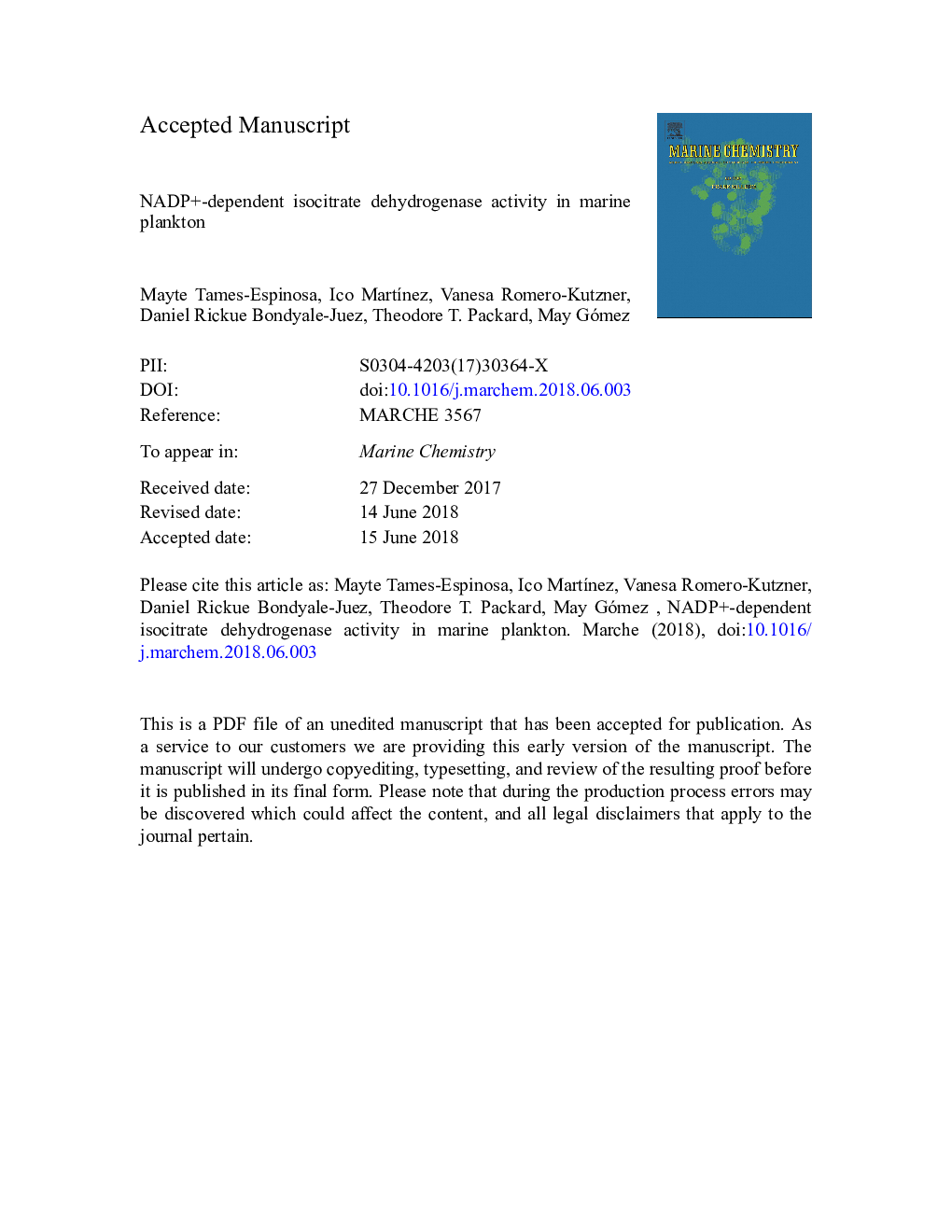| Article ID | Journal | Published Year | Pages | File Type |
|---|---|---|---|---|
| 8942790 | Marine Chemistry | 2018 | 35 Pages |
Abstract
NADP+-isocitrate dehydrogenase (NADP-IDH), as one of the most active intracellular CO2-producing enzymes, was measured in marine plankton by adapting an enzyme assay to the 0.7-50â¯Î¼m, 50-200â¯Î¼m, and 200-2000â¯Î¼m size fraction of the Canary Islands coastal plankton community. The variability of NADP-IDH activity in relation to pH, temperature, dilution of the sample, centrifugation or substrates was measured. In our hands, the maximum NADP-IDH activity (Vmax) in marine plankton samples was attained in 0.1â¯M phosphate buffer at pHâ¯8.2 (pKa1â¯=â¯7.6 and pKa2â¯=â¯8.8), by adding 6â¯mM MgCl2, 0.3â¯mM NADP+ and 2â¯mM DL-trisodium isocitrate. The optimum temperature in these subtropic mesozooplankton samples was 28â¯Â°C, with an Arrhenius energy of activation (Ea) of 20.4â¯kcalâ¯molâ1 (85.4â¯Jâ¯molâ1), and an Arrhenius collision frecuency factor (A) of 2.9·1011â¯molâ¯NADPHâ¯sâ1 (kg of protein)â1. The apparent Michaelis-Menten Km values for the substrates in crude homogenates at pHâ¯8.5 and 18â¯Â°C were 271â¯Â±â¯63â¯Î¼M for isocitrate and 18â¯Â±â¯3â¯Î¼M for NADP+. This enzyme, in addition to its high CO2-producing activity, is also important in regulating other CO2-producing enzymes. Thus, it can be used to calculate: (1) respiration in marine samples; (2) carbon flux in the water column; (3) metabolic adaptations to environmental changes; (4) roles of the plankton components of the food chain; and (5) the reactive oxygen species (ROS) scavenging capacity of the marine plankton resources.
Related Topics
Physical Sciences and Engineering
Chemistry
Chemistry (General)
Authors
Mayte Tames-Espinosa, Ico MartÃnez, Vanesa Romero-Kutzner, Daniel Rickue Bondyale-Juez, Theodore T. Packard, May Gómez,
